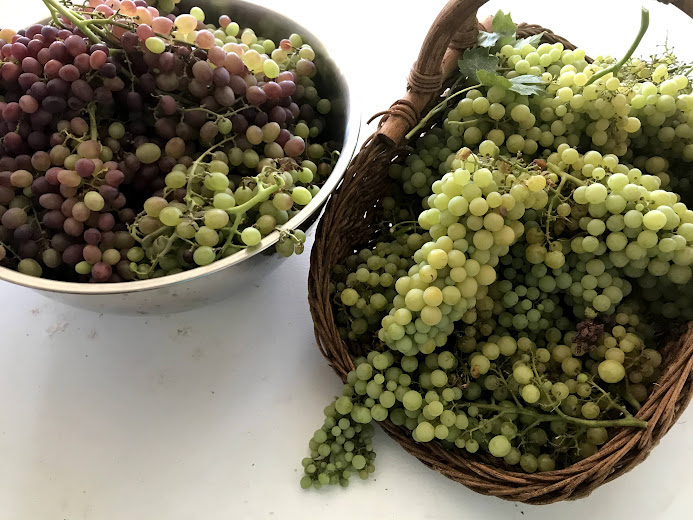FULL SUN
Full sun, or afternoon shade
pH
Acidic 5.6
FEEDING
Balanced fertilizer
PLANTING
Spring, Fall, Winter
Grapes are an easy-to-grow vine for the Arizona area. They are perfect on large chain link fences, trellised against large block walls, or for use as an overhead shade canopy. Botanically, grapes are considered berries and grow on deciduous woody vines that can live for hundreds of years.
Grapes are deciduous; during fall, leaves will turn yellow to beautiful coppers and reds depending on the variety, before they are shed.
They grape pictures featured are all from Jessica and Chris Spencer’s property, Ardenelli Farms. In this growing guide, we include muscadines as well.
Vitis vinfera
This is the kind of grape most are familiar with and is the European style of grape. It originated in the Middle east around 6000-8000 years ago. These vines can live for hundreds of years and the roots can be quite significant as the vine matures. It is best not to plant close to foundations as most of the root system can be found in the top 3 ft of soil. Some individual roots can grow up to 30 ft deep. Water correctly.
Muscadania Rotundifolia
Commonly known as Muscadine grapes or scuppernong and native to America. They form small clusters of thick-skinned berries, some varieties are prone to splitting when ripe. The interior is much softer than European-styled grapes. When harvested, muscadines can have what is referred to as a wet stem scar. This means that the fruit may tear when harvested which reduces its shelf life. Choose varieties that have a dry stem scar. Muscadines are perfect for juicing as they have thick skin and juicy pulp. They are also best planted away from foundations.
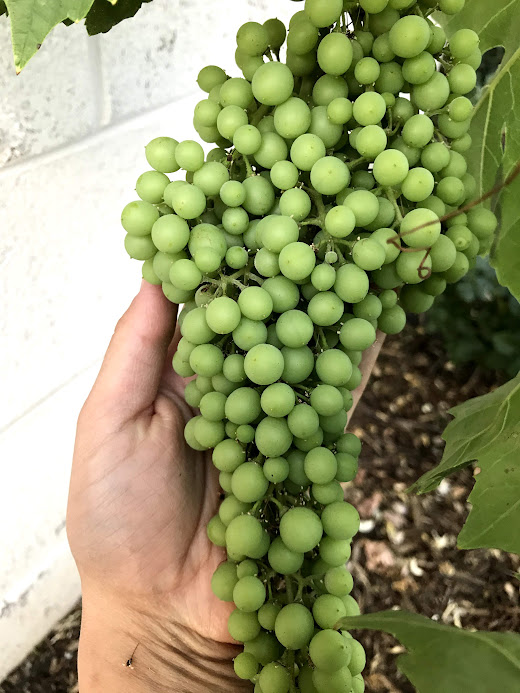
Varieties:
Black Manukka: This delicious variety produces purple seedless grapes in loose clusters. The fruit is crisp, sweet and complex in flavor. A hardy variety that is popular with home growers.
Crimson Seedless: A medium-sized seedless grape, on prolific vines. This is a sweet and crisp table grape on a vigorous vine. Requires a sturdy support structure. Ripens in September.
Blueberry Grapes: Seedless sweet variety similar to concord. Purple grapes ripen from mid-August to September. Has a hint of blueberry flavor.
Thompson Seedless: Dave Wilson nurseries consider this the most popular grape in CA and AZ. This green variety loves the heat and is less susceptible to bird damage. Thompsons are sweet grapes that are good for fresh eating and raisins.
There are a vast number of varieties available other than what is listed above. Check local suppliers for other varieties.
Carlos Muscadine: A heavy-producing variety that is self-fruitful. It produces medium-sized grapes with a bronze exterior and dry stem scar. This is a self-fruitful variety on vigorous vines. A popular variety in muscadine winemaking.
Alachua: Try this variety for a black muscadine with a dry stem scar. It is self-fertile and disease resistant. Alachua makes an excellent juice with a strong muscadine flavor.
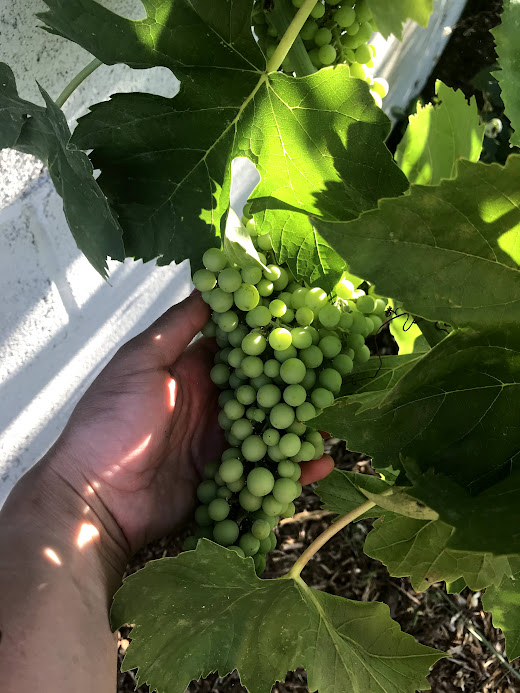
HOW TO GROW
**Both types are suitable for growing in desert areas in-ground. They can be grown in 30-gallon or larger containers short term for about 2-3 years.
- Grapes do not like root disturbance, handle as little as possible during transplant.
- The planting hole does not require much. Grapes need well-draining soil, use larva rock in the planting hole to aid drainage and prevent root rot.
- Use a sulfur product to amend the soil pH.
- Do not plant any deeper than the soil of the nursery pot. Dig the hole wider than the pot, when positioning the grape transplant ensure that it is slightly above the soil grade as it will settle.
- After planting use organic compost and Earth’s Original Organics to fertilize.
- Water grapes deeply and allow them to dry out slightly between waterings.
- Grapes will need support to climb on.
- They need a full sun location even in our growing conditions.However they do not mind afternoon shade area where temperatures are in the triple digits.
- During the first year, remove any fruit. This will help get a more prolific harvest the following year.
- For larger grapes, snip off several grapes throughout each bunch, a couple of weeks after they set fruit.
- After fruiting, they can be lightly pruned to maintain size and tidy up.
- True pruning is done in December or January when the plants are dormant. For pruning tips, refer to the video below from Dave Wilson nurseries.
- Protect ripening fruit from birds with organza bags.
POSSIBLE ISSUES
Small Grapes
A common problem with homegrown grapes. After the fruit has set, remove grapes throughout each bunch, to allow those left to fill out.
Fungal Infections
Ensure there is sufficient airflow and that leaves are not watered at night. Remove all badly infected areas. Treat with 1 part milk to 3 parts water. Spray this solution on the vine to prevent fungal spores from taking hold.
Grape Leaf Skelotonizers
Grape leaf skeletonizers are a dreaded pest that turns grape leaves into “lace” Prevention is best. These shiny black moths lay eggs on the plant and the caterpillars that hatch feed voraciously on the leaves. Keep bT, Bacillus Thuringiensis on hand to treat. This is an organic OMRI-approved bacterial treatment that only affects caterpillars. Once it is in the caterpillar’s system it prevents them from feeding.
Fruit Not Setting
Another common pest on grape leaves are leap hoppers. This will cause leaves to look unsightly and will also affect other crops. Use IV ORGANICS 3-1 plant Guard on both sides of the leaves to deter leaf hoppers.
Birds
Birds are a great indicator of when grapes are just about ready for harvest. This also means they could damage much of your harvest if precautions are not taken. Use organza bags to protect ripening fruit. Green varieties tend to attract less bird attention.
Good Companion
Plant with mulberries. several herbs are good grape companions including hyssop, basil,oregano. Other good companions are clover, beans and peas.
Harvesting
Harvest when they are fully formed and sweet.
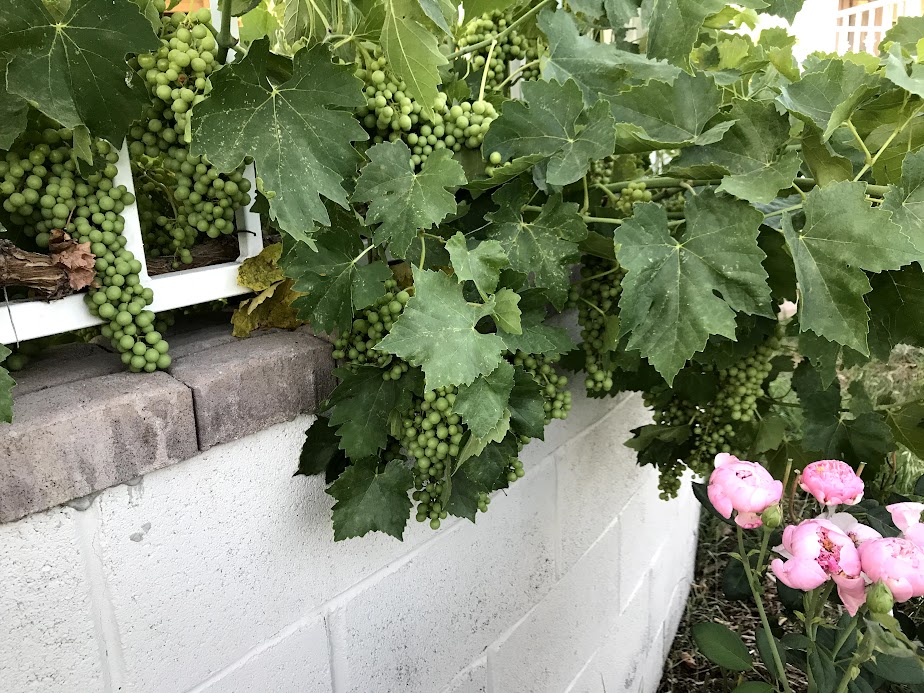
FULL SUN
Full sun, or afternoon shade
pH
Acidic 5.6
FEEDING
Balanced fertilizer
PLANTING
Spring, Fall, Winter
Grapes are an easy-to-grow vine for the Arizona area. They are perfect on large chain link fences, trellised against large block walls, or for use as an overhead shade canopy. Botanically, grapes are considered berries and grow on deciduous woody vines that can live for hundreds of years.
Grapes are deciduous; during fall, leaves will turn yellow to beautiful coppers and reds depending on the variety, before they are shed.
They grape pictures featured are all from Jessica and Chris Spencer’s property, Ardenelli Farms. In this growing guide, we include muscadines as well.
Vitis vinfera
This is the kind of grape most are familiar with and is the European style of grape. It originated in the Middle east around 6000-8000 years ago. These vines can live for hundreds of years and the roots can be quite significant as the vine matures. It is best not to plant close to foundations as most of the root system can be found in the top 3 ft of soil. Some individual roots can grow up to 30 ft deep. Water correctly.
Muscadania Rotundifolia
Commonly known as Muscadine grapes or scuppernong and native to America. They form small clusters of thick-skinned berries, some varieties are prone to splitting when ripe. The interior is much softer than European-styled grapes. When harvested, muscadines can have what is referred to as a wet stem scar. This means that the fruit may tear when harvested which reduces its shelf life. Choose varieties that have a dry stem scar. Muscadines are perfect for juicing as they have thick skin and juicy pulp. They are also best planted away from foundations.

Varieties:
Black Manukka: This delicious variety produces purple seedless grapes in loose clusters. The fruit is crisp, sweet and complex in flavor. A hardy variety that is popular with home growers.
Crimson Seedless: A medium-sized seedless grape, on prolific vines. This is a sweet and crisp table grape on a vigorous vine. Requires a sturdy support structure. Ripens in September.
Blueberry Grapes: Seedless sweet variety similar to concord. Purple grapes ripen from mid-August to September. Has a hint of blueberry flavor.
Thompson Seedless: Dave Wilson nurseries consider this the most popular grape in CA and AZ. This green variety loves the heat and is less susceptible to bird damage. Thompsons are sweet grapes that are good for fresh eating and raisins.
There are a vast number of varieties available other than what is listed above. Check local suppliers for other varieties.
Carlos Muscadine: A heavy-producing variety that is self-fruitful. It produces medium-sized grapes with a bronze exterior and dry stem scar. This is a self-fruitful variety on vigorous vines. A popular variety in muscadine winemaking.
Alachua: Try this variety for a black muscadine with a dry stem scar. It is self-fertile and disease resistant. Alachua makes an excellent juice with a strong muscadine flavor.

HOW TO GROW
**Both types are suitable for growing in desert areas in-ground. They can be grown in 30-gallon or larger containers short term for about 2-3 years.
- Grapes do not like root disturbance, handle as little as possible during transplant.
- The planting hole does not require much. Grapes need well-draining soil, use larva rock in the planting hole to aid drainage and prevent root rot.
- Use a sulfur product to amend the soil pH.
- Do not plant any deeper than the soil of the nursery pot. Dig the hole wider than the pot, when positioning the grape transplant ensure that it is slightly above the soil grade as it will settle.
- After planting use organic compost and Earth’s Original Organics to fertilize.
- Water grapes deeply and allow them to dry out slightly between waterings.
- Grapes will need support to climb on.
- They need a full sun location even in our growing conditions.However they do not mind afternoon shade area where temperatures are in the triple digits.
- During the first year, remove any fruit. This will help get a more prolific harvest the following year.
- For larger grapes, snip off several grapes throughout each bunch, a couple of weeks after they set fruit.
- After fruiting, they can be lightly pruned to maintain size and tidy up.
- True pruning is done in December or January when the plants are dormant. For pruning tips, refer to the video below from Dave Wilson nurseries.
- Protect ripening fruit from birds with organza bags.
POSSIBLE ISSUES
Small Grapes
A common problem with homegrown grapes. After the fruit has set, remove grapes throughout each bunch, to allow those left to fill out.
Fungal Infections
Ensure there is sufficient airflow and that leaves are not watered at night. Remove all badly infected areas. Treat with 1 part milk to 3 parts water. Spray this solution on the vine to prevent fungal spores from taking hold.
Grape Leaf Skelotonizers
Grape leaf skeletonizers are a dreaded pest that turns grape leaves into “lace” Prevention is best. These shiny black moths lay eggs on the plant and the caterpillars that hatch feed voraciously on the leaves. Keep bT, Bacillus Thuringiensis on hand to treat. This is an organic OMRI-approved bacterial treatment that only affects caterpillars. Once it is in the caterpillar’s system it prevents them from feeding.
Fruit Not Setting
Another common pest on grape leaves are leap hoppers. This will cause leaves to look unsightly and will also affect other crops. Use IV ORGANICS 3-1 plant Guard on both sides of the leaves to deter leaf hoppers.
Birds
Birds are a great indicator of when grapes are just about ready for harvest. This also means they could damage much of your harvest if precautions are not taken. Use organza bags to protect ripening fruit. Green varieties tend to attract less bird attention.
Good Companion
Plant with mulberries. several herbs are good grape companions including hyssop, basil,oregano. Other good companions are clover, beans and peas.
Harvesting
Harvest when they are fully formed and sweet.

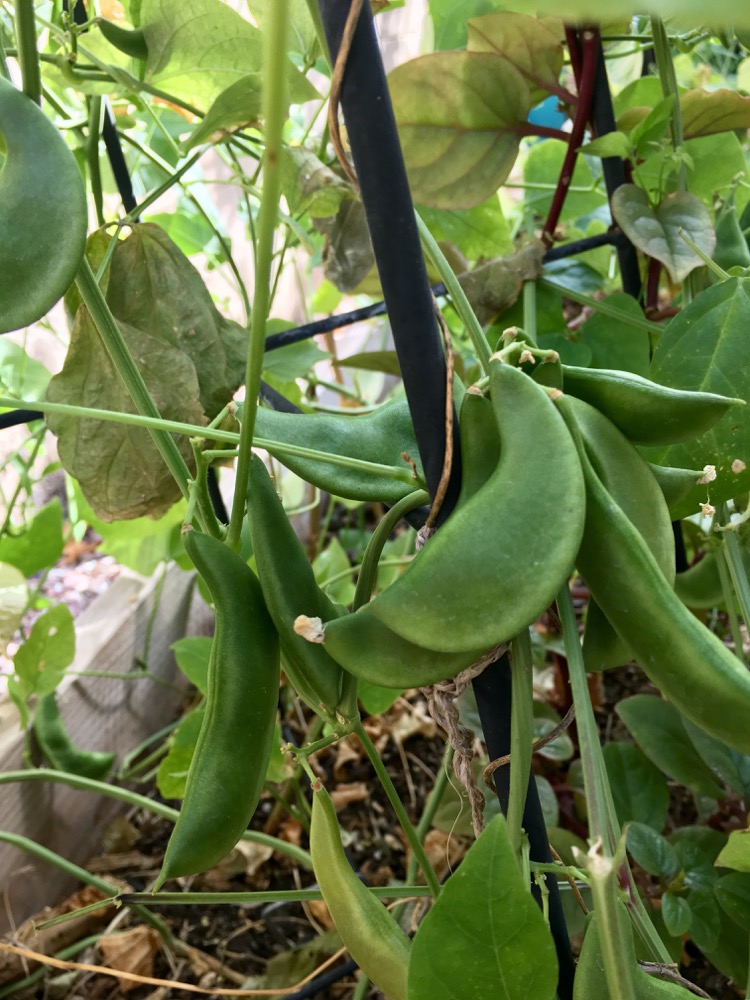
Why You Should Be Inoculating Beans For Planting In A Desert Garden
// by Ayshica
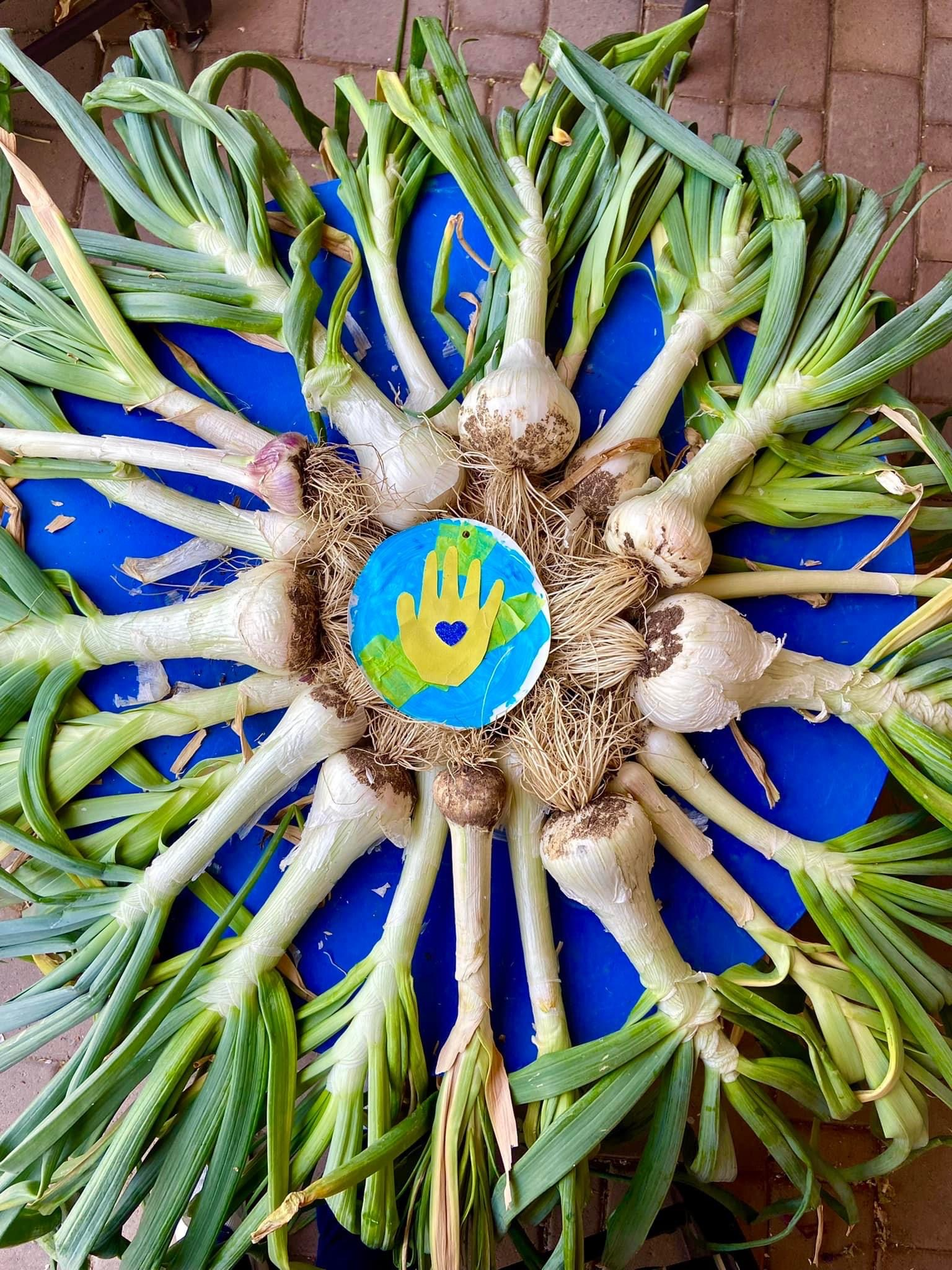
How to Grow Onions In The Desert
// by Ayshica
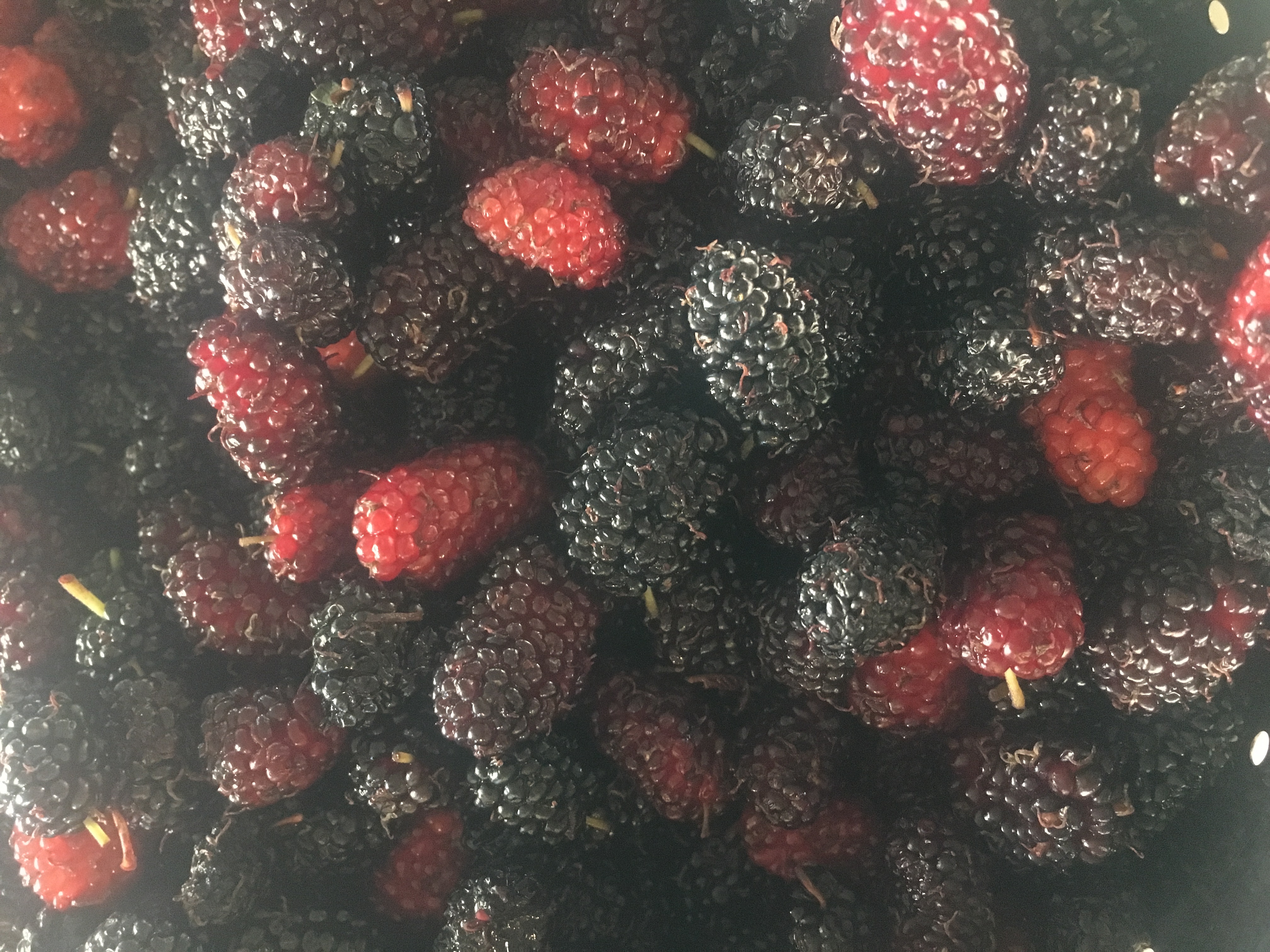
How To Grow Mulberries in the Desert
// by Ayshica
Kaolin Clay for Pest Management
// by Ayshica
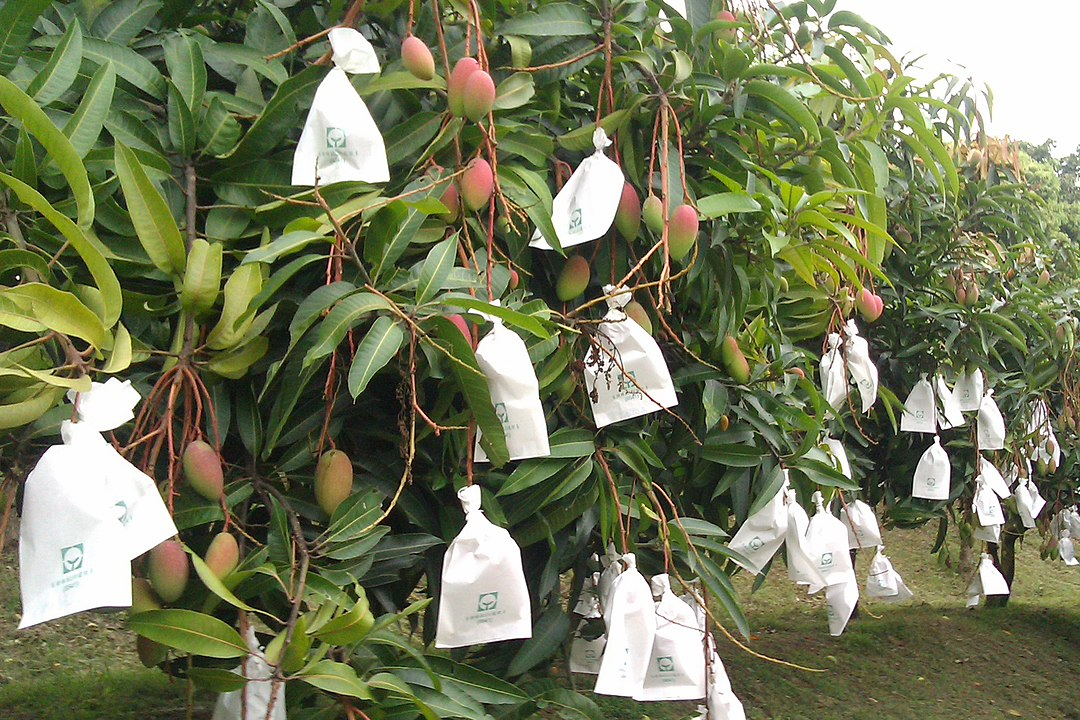
How To Grow Mangoes In The Desert
// by Ayshica
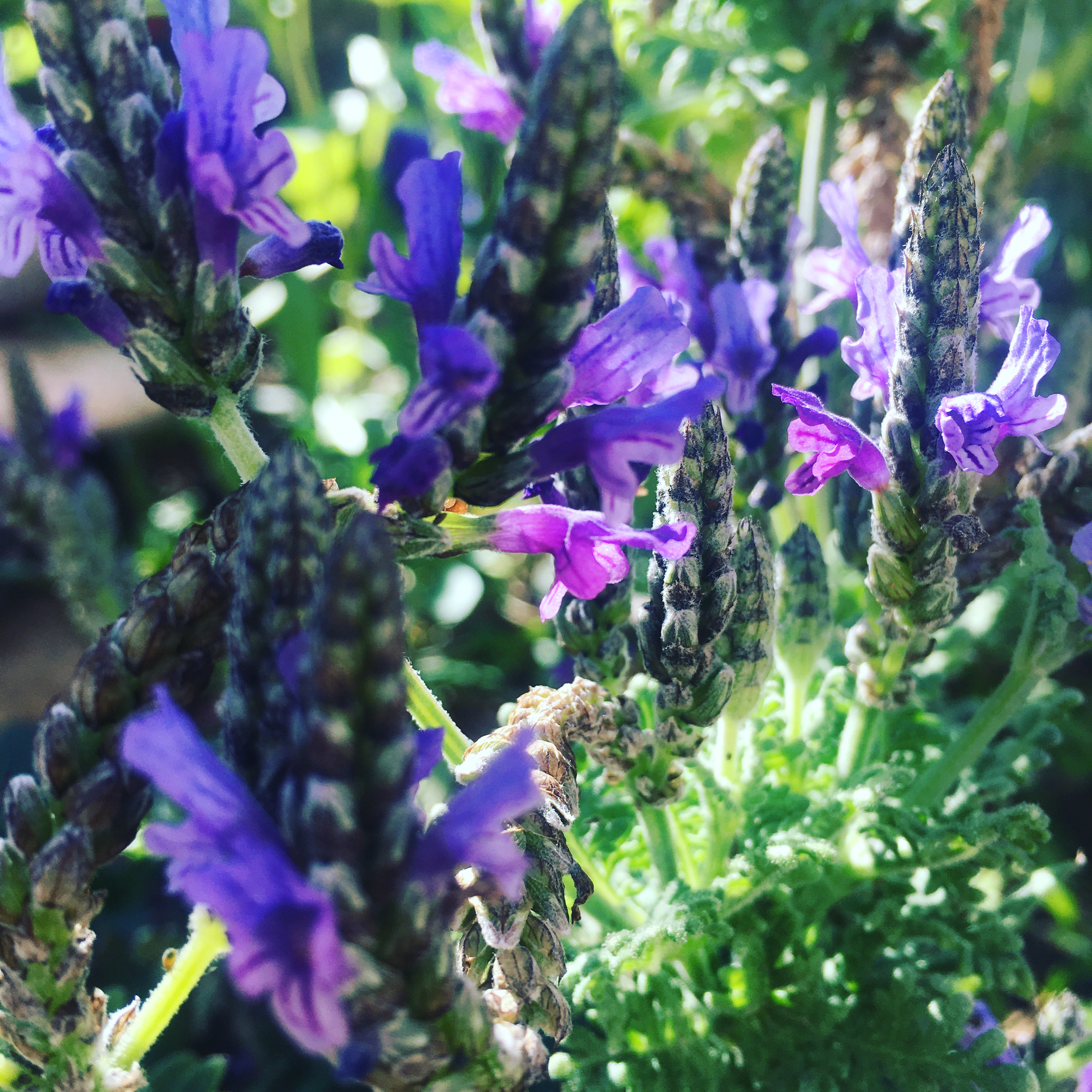
How To Grow Lavender In The Desert
// by Ayshica
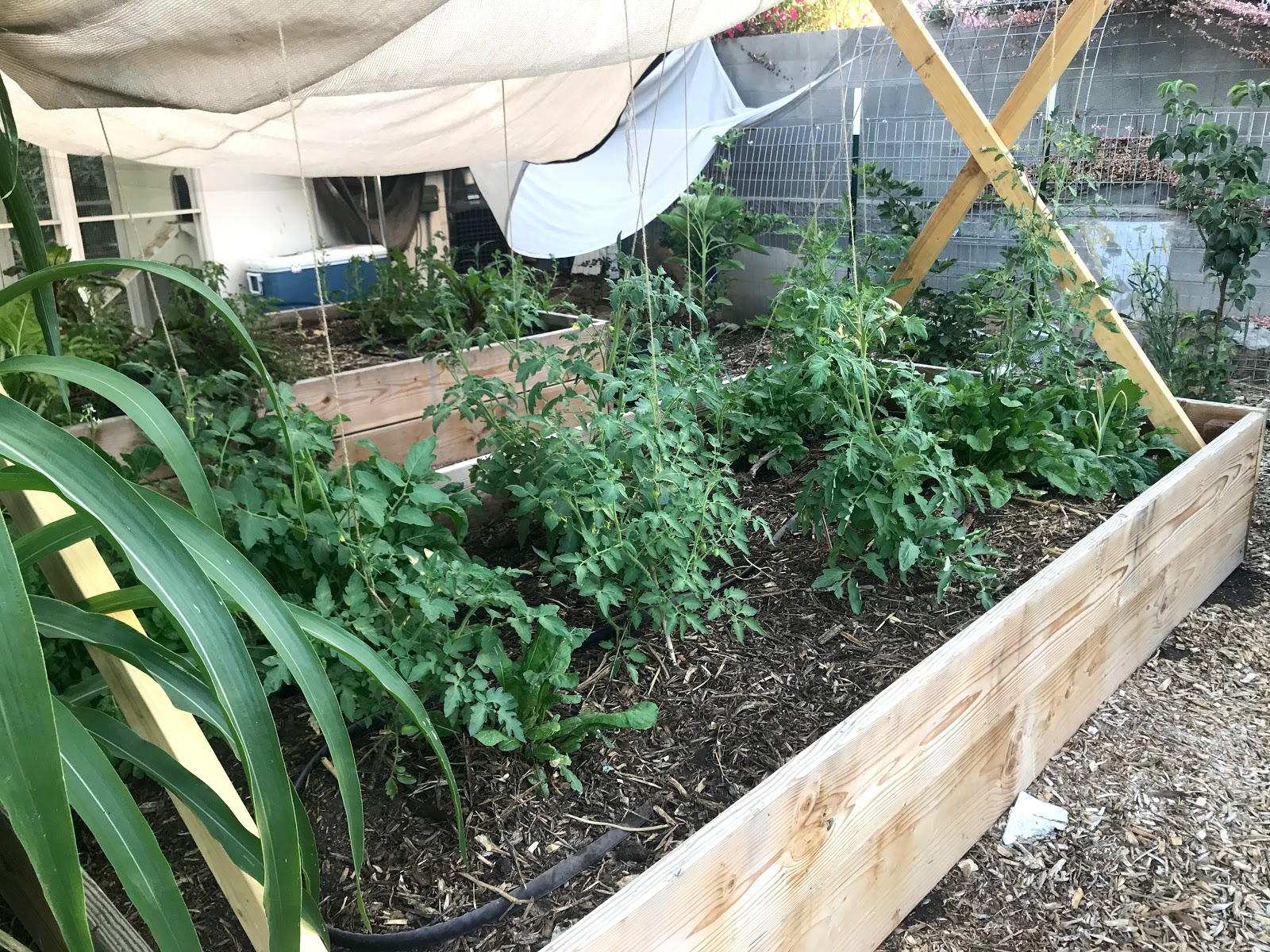
Prepping the Garden for a Desert Summer
// by Ayshica
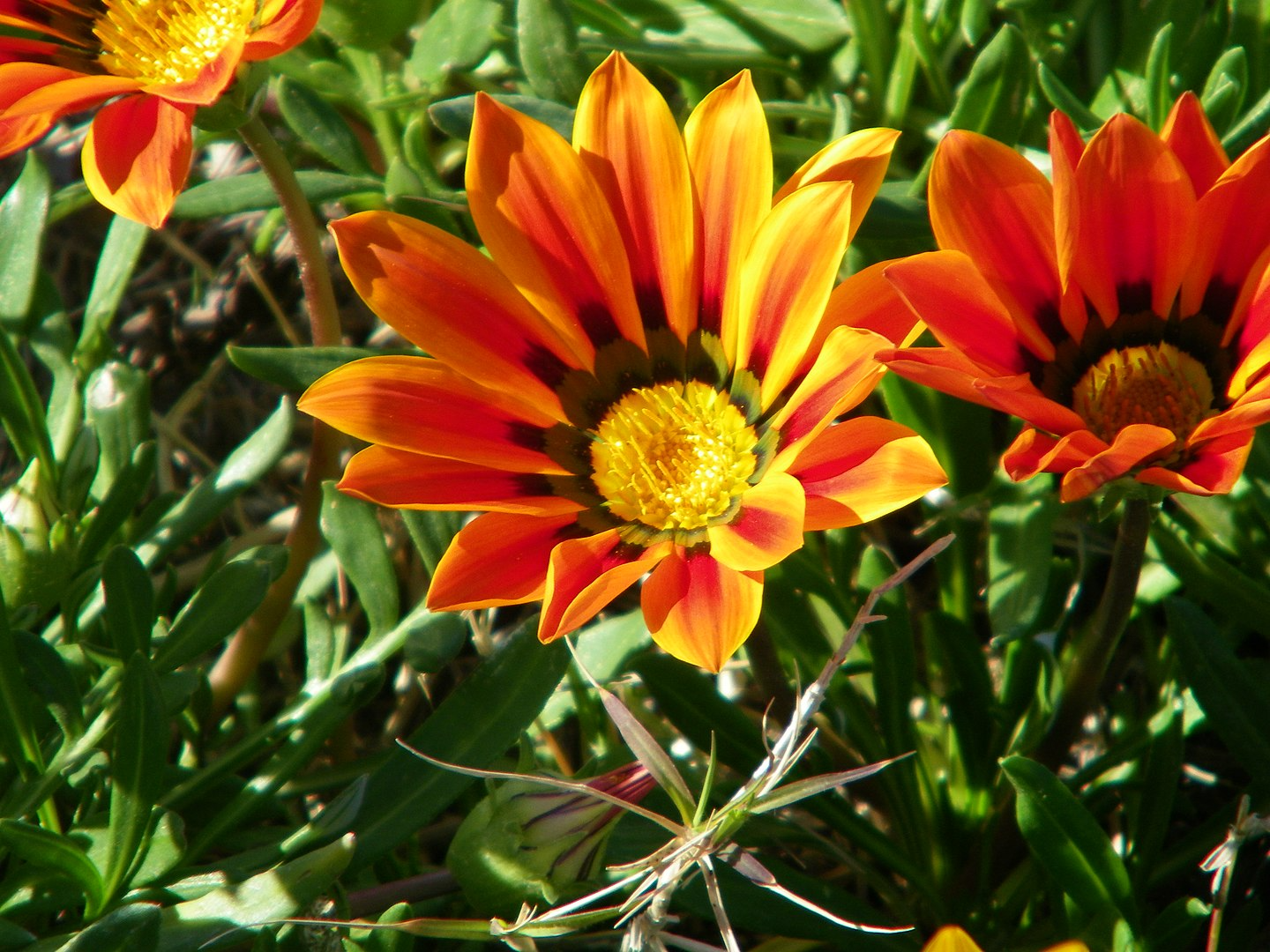
Summer Flowers for Full Sun Desert Conditions
// by Ayshica
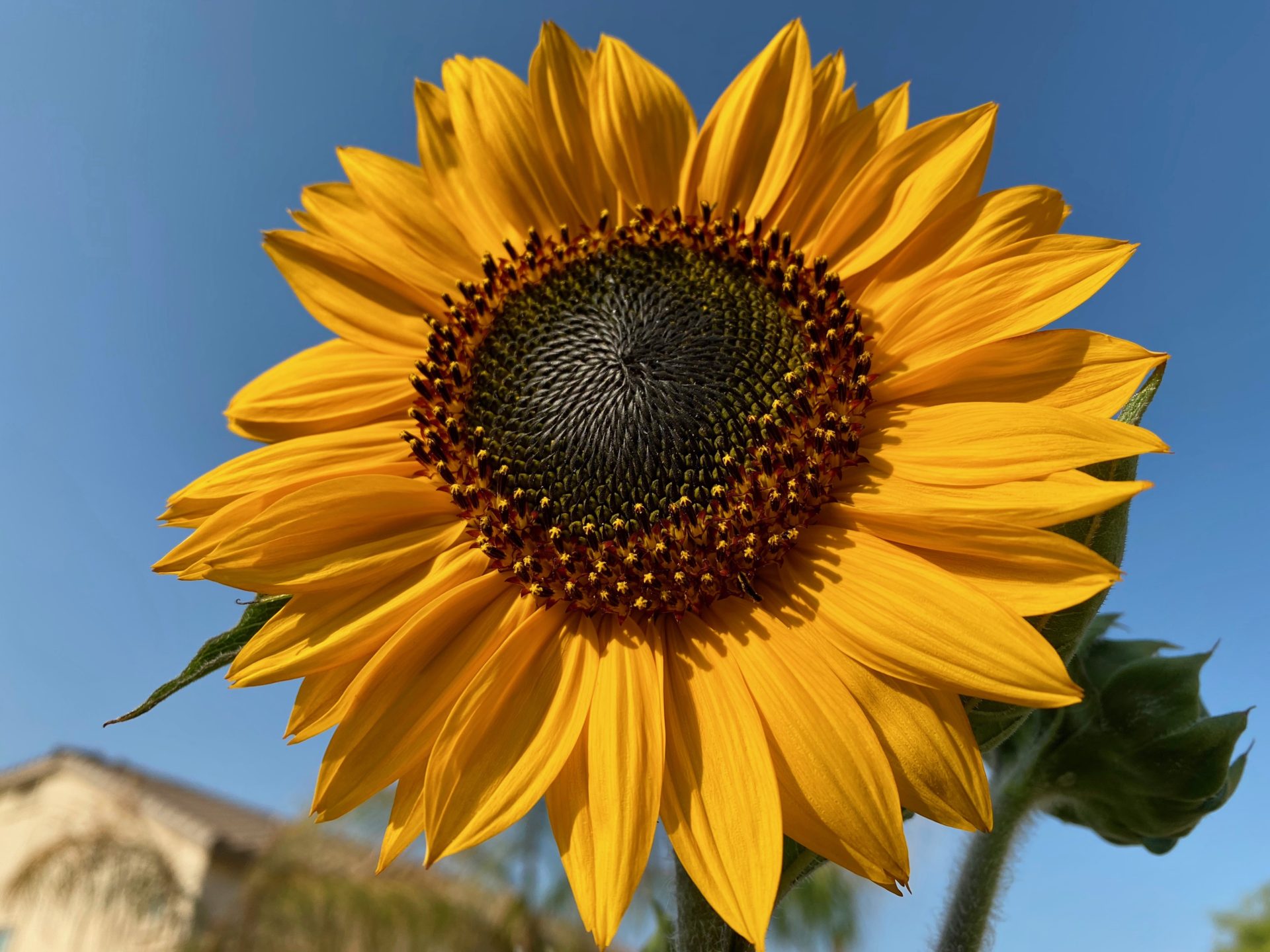
Grow Sunflowers Year Round In The Desert- A Beneficial Addition To Any Garden
// by Ayshica
- Go to page 1
- Go to page 2
- Go to page 3
- Interim pages omitted …
- Go to page 11
- Go to Next Page »

